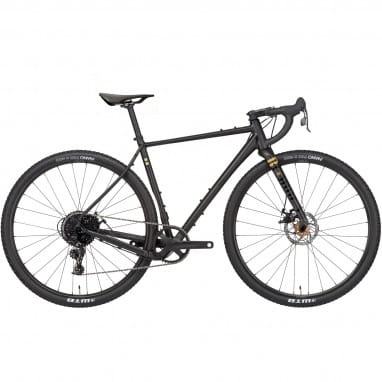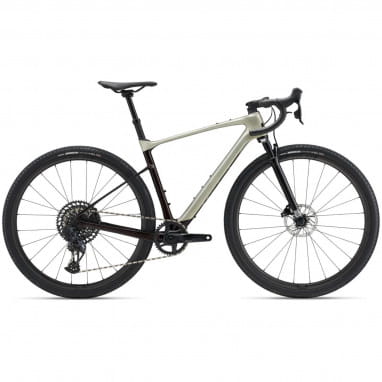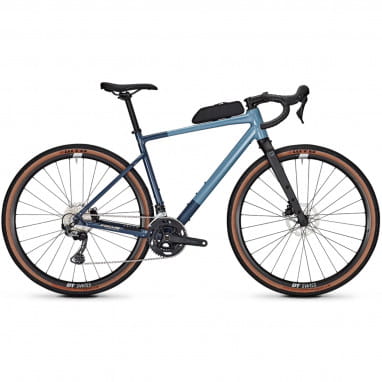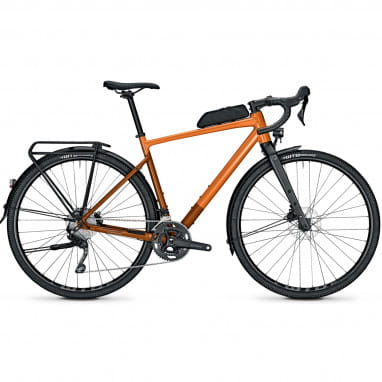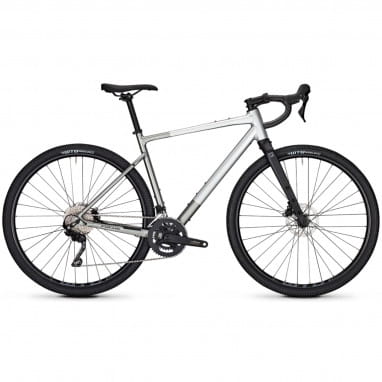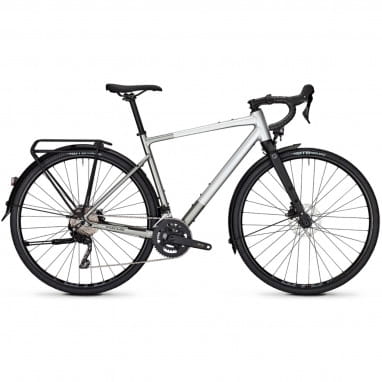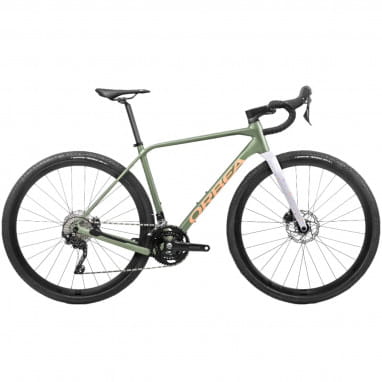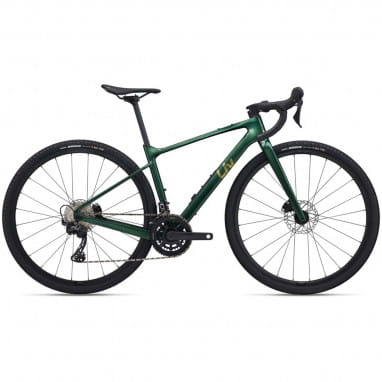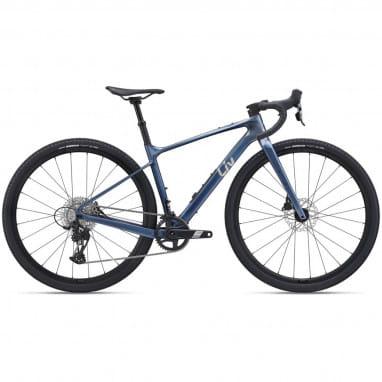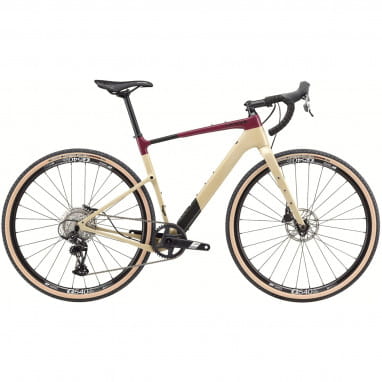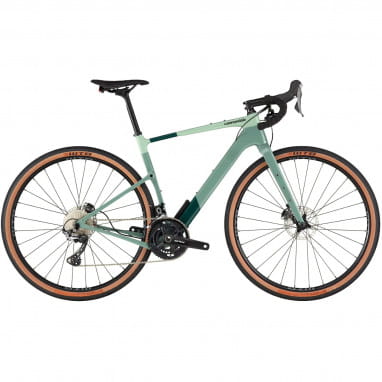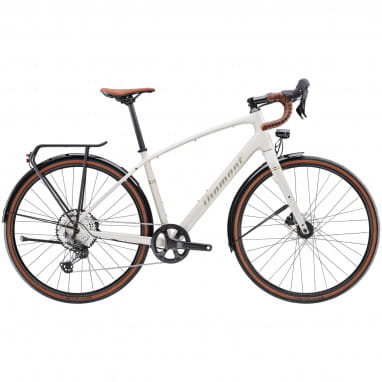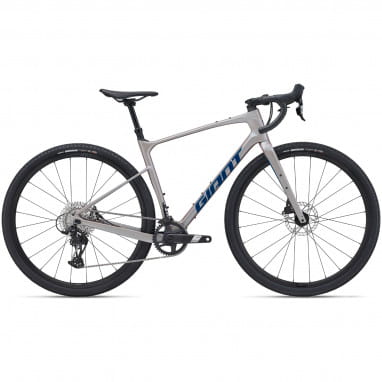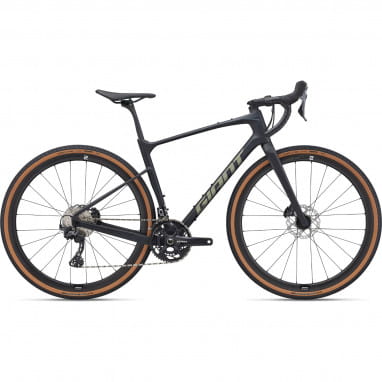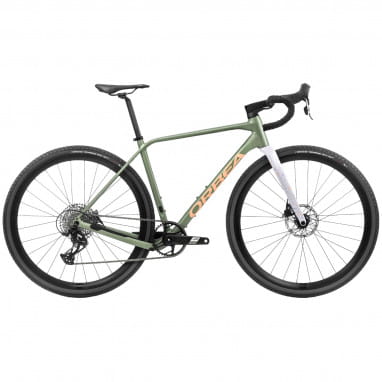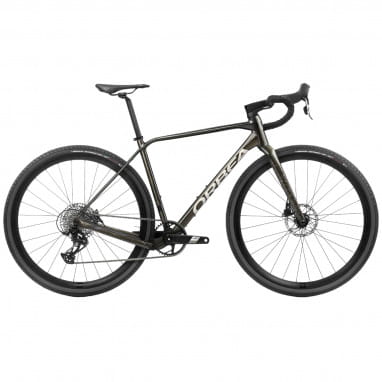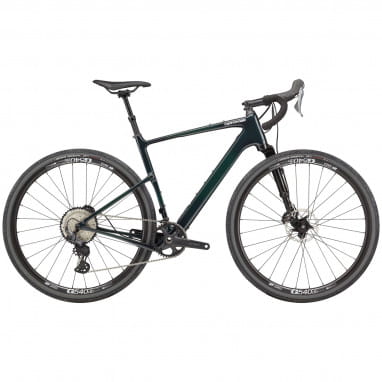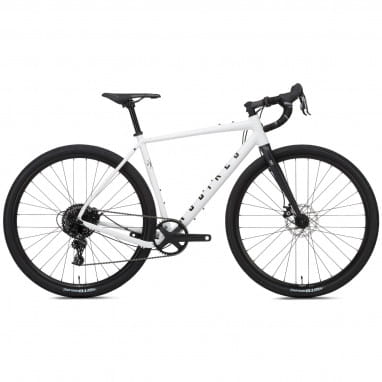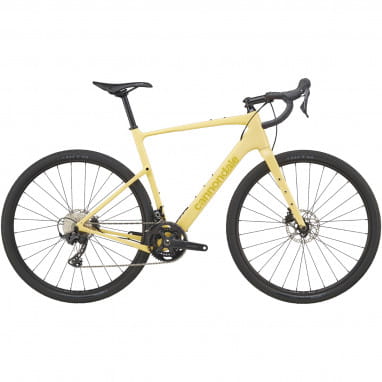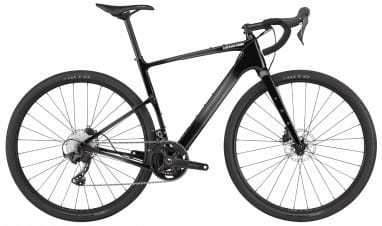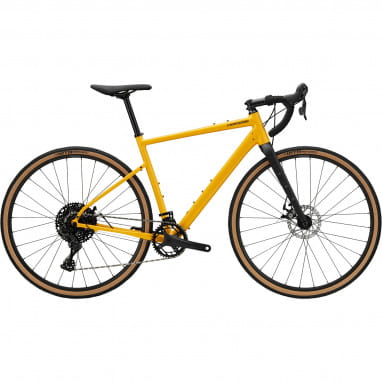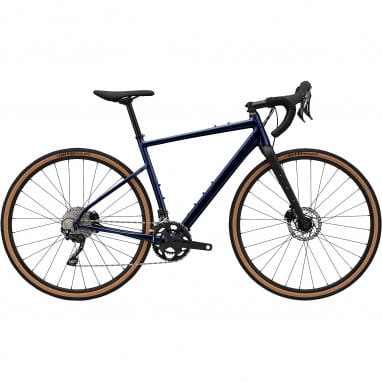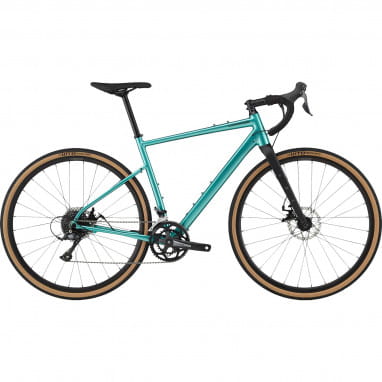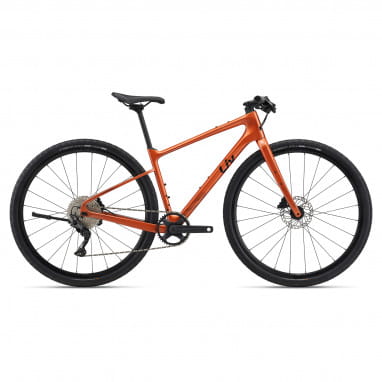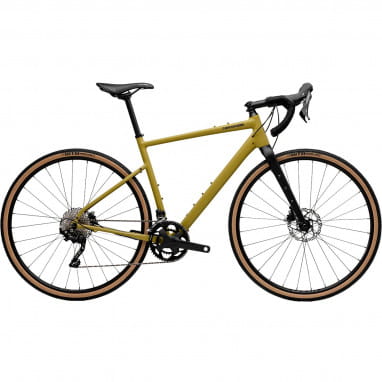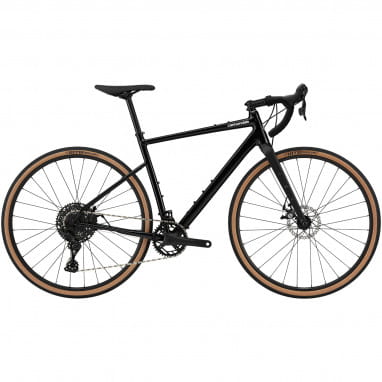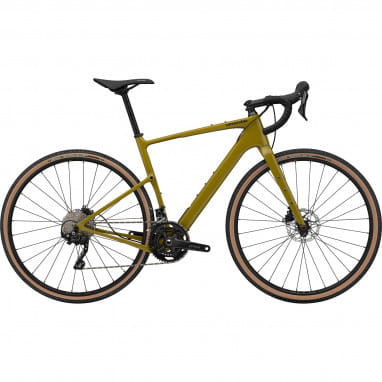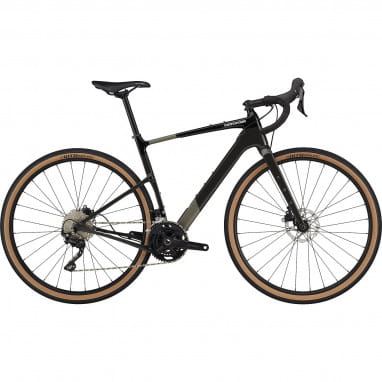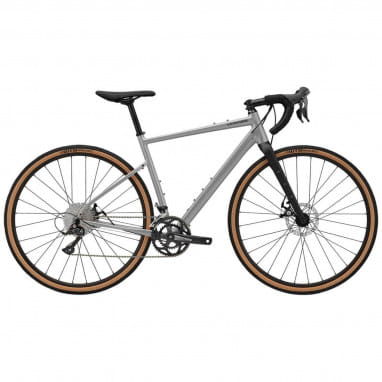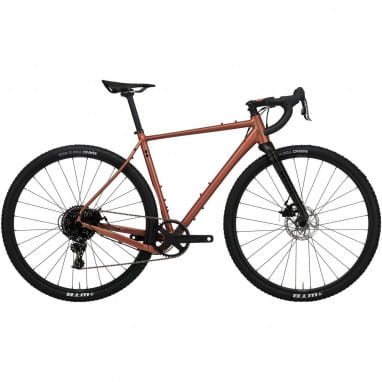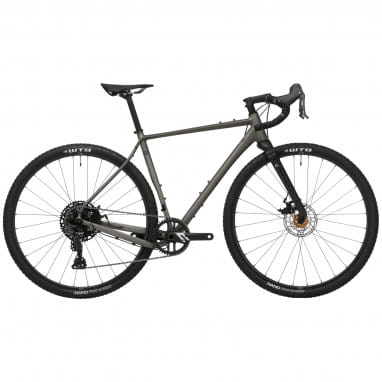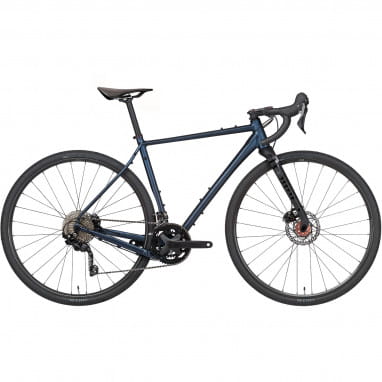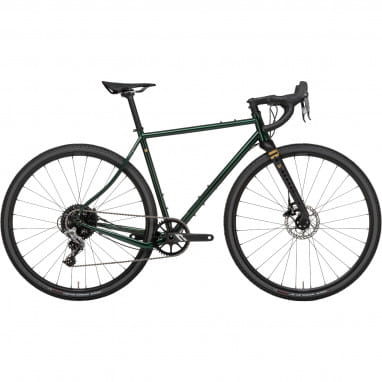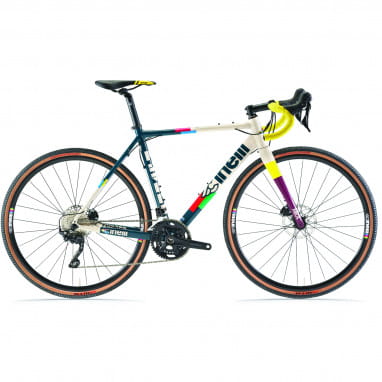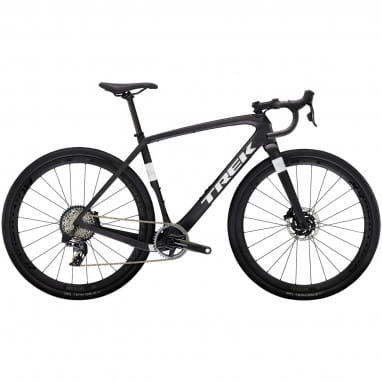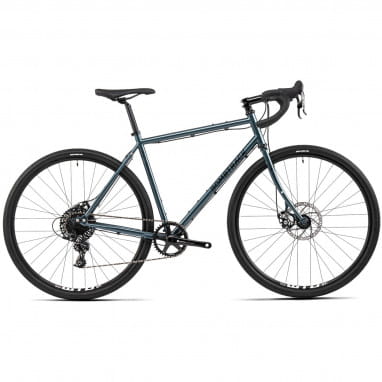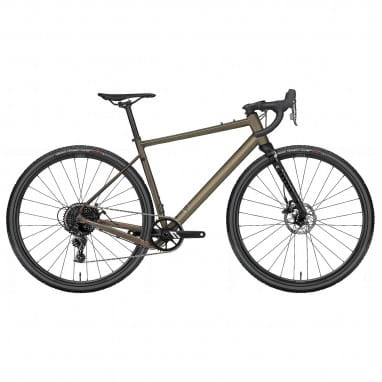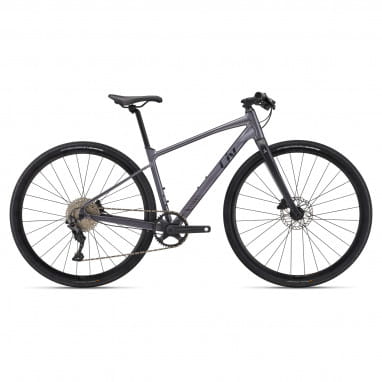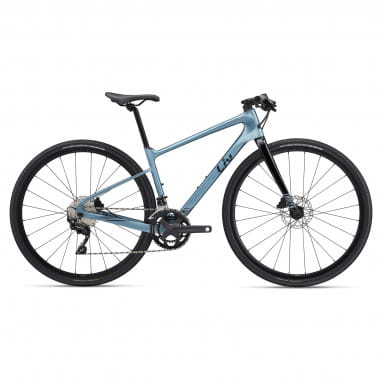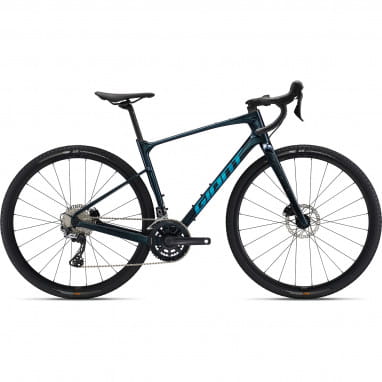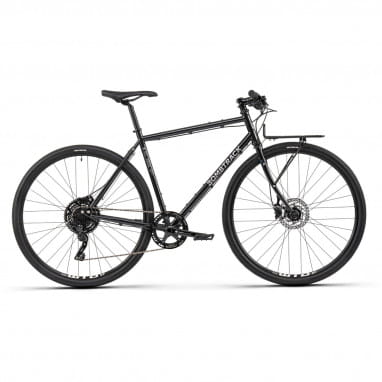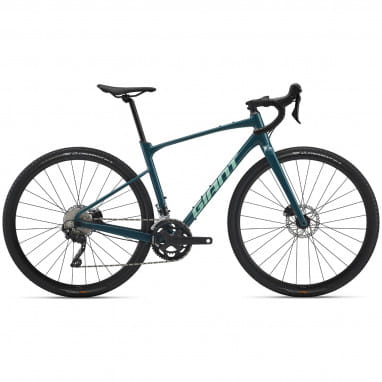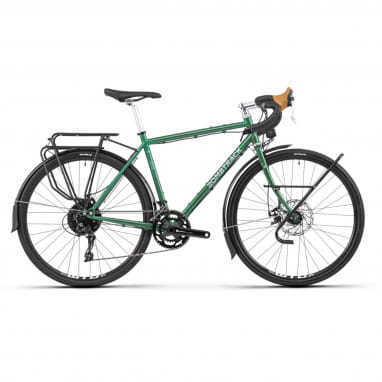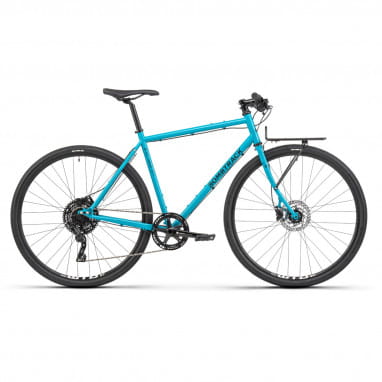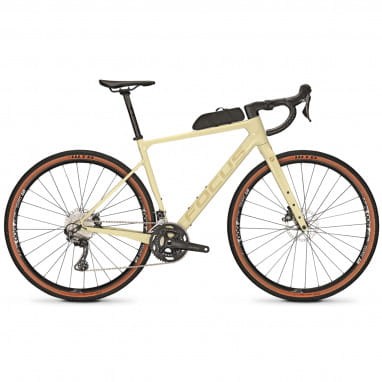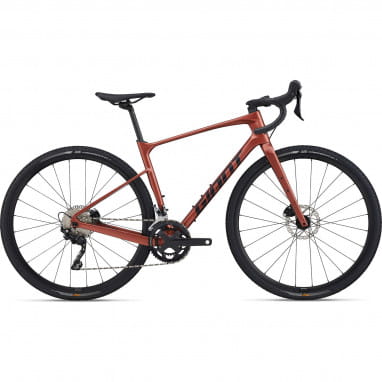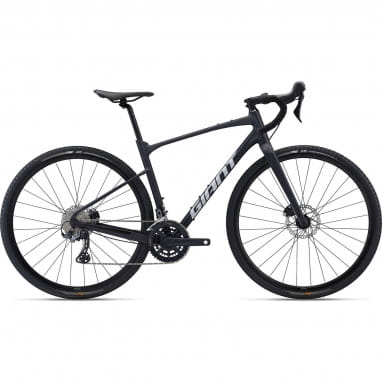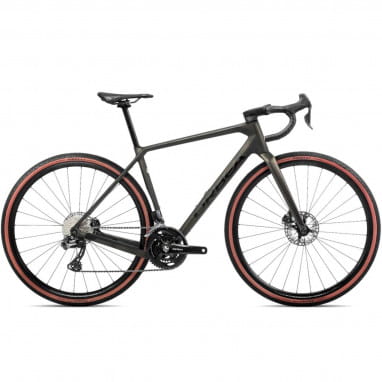It wasn't that long ago that gravel bikes were a niche product and a rare sight. Then they became the next big thing and, once again, they were rare to find – simply because they were sold out. Today they are everywhere, in the city, on any bike lane, on dirt roads or long-distance bike paths, in the lowlands and in the mountains. Anywhere has become gravel bike territory. And that's their greatest strength – gravel bikes are incredibly versatile!
Many bike disciplines are becoming more and more specialized these days. Would you like an example? A mountain bike today is not just a mountain bike, it's an enduro, a downhill bike, a cross-country bike or whatever. But that also means that if your bike doesn't match the terrain in front of you, it basically means you're screwed. Road cyclists have known this problem for a long time. You can make good progress on a road bike. But only as long as the asphalt is smooth. When the going gets rough, that's it. Cyclocross bikes offer a little more freedom, they're built for races in the mud. But honestly? Bike races through knee-deep mud aren't really everyone's cup of tea.
So how do you combine the elegance of a road bike with a touring bike's wide range of uses and the off-road capabilities of a mountain bike? The solution was quite simple, the gravel bike had to be invented!
Even the name reveals the direction in which the bikes like to move. They like to ride on gravel or rough grounds, so they do just fine on the surfaces that road bikes tend to have trouble with.
This is a Gravel Bike - Interesting facts about Gravel Bikes
If you take a look at a Gravel Bike from a distance, it actually looks like a road bike. Especially for non-bikers, the typical road bike handlebars or the "drop bar" is decisive when sorting bikes into categories – "Ah, sure, drop bar = road bike! Must be quick."
But something seems to be different about this road bike....
Wide tires, preferably with some tread
The tires are one of the greatest differences between gravel bikes and road bikes. Road bike tires are thin and smooth. Wide tires with lots of tread pattern? Never! That would only cause unnecessary rolling resistance! Gravels, on the other hand, roll on wide, grippy wheels with a little to a lot of tread. And it is those tires that allow gravels to ride even off of the paved roads, where slick road bike tires would get stuck.
They also provide significantly more riding comfort, because after all, pneumatic tires were invented specifically to cushion bumpy bike rides. Thick tire - lots of air - lots of damping!
What size the tires can actually have depends on the model and the manufacturer of the bike in question. Many gravel bikes can be mounted with up to 40 mm of tire width or even more. With thinner tires, 28 mm for example, a Gravel is pretty much a fast road bike, while mounted with 650b wheels and 47 mm wide tires turns it almost into a mountain bike.
Some bikes also can be set up with 27.5 inch wheels, while others are built for 28 or 29inch hoops.
Just take a look at the specifications of the gravel bikes here in the shop, they will tell you what tire size can be mounted.
Athletic or relaxed geometry
A road cyclist's nose is usually just a few centimeters above the stem, with the torso being almost parallel to the top tube. This makes for aerodynamic cycling, but it is not really comfortable. The geometry of the frame is responsible for the riding position. Above all, the reach (the distance from the saddle to the handlebars) determines how low and stretched out you sit on your bike, and how much your spinal discs enjoy your rides.
Gravels have a much more relaxed geo than road bikes, the rider sits more upright. They're not made for top times, but for fun pedaling and long, relaxed bikepacking rides. They also offer a good overview over your surroundings, inner city traffic for example. As nice that stem may be, a good view is nicer!
Gravel bikes usually have road bike handlebars
You've already read it above, gravel bikes often ride with drop bars. However, it is perfectly ok if you prefer to have a flatbar on your gravel bike.
Mounting points for add-on parts
This is where real road bike enthusiasts get goosebumps. A gravel bike has eyelets where add-ons such as luggage racks, front racks, mudguards or even a lighting system can be mounted. What would be total no-go on a road bike not only makes gravel bikes suitable for everyday use, it also allows for bike touring and bikepacking with lots of luggage.
Robust components
These bikes are designed for durability rather than little weight. All the parts, the frame and the fork have to be able to carry the weight of your bikepacking gear while running over bumpy surfaces. Therefore, they are built to last and if that means they are a little heavier, that's ok.
Gravel bikes for men and women
The rise of gravel bikes came alongside with the disappearance of gender-specific bicycles. More and more bike manufacturers realized that the appropriate bike size is far more important than the distinction between women's bikes and men's bikes. As a result, most gravel bikes are not built for women or men, but for people. To make sure your bike fits you, you can choose between bikes with different geometries and in different sizes, and fine-tune the fit by exchanging stems and seatposts.
Gravel bikes for kids are still scarce, but there are some. For older children and teenagers, a model in a small frame size might be suitable, but generally kids are better off with those kiddo-friendly all-rounders with a low step-through.
1-x gearshifts
The triumph of gravel bikes also began at the same time as the latest revolution in the field of bicycle components, because bicycle gear shifts have started to shrink approximately since 2019. Before that, the motto was "more is more", the more gears a bike had, the more sprockets and cogs, the better. Today, 1x groups are very popular. They have up to 12 cogs, but only one sprocket, that makes 12 gears. The range of gears remains almost the same, only the gradations are not quite as finely adjustable as with a 2x or 3x shift. However, the groupsets become lighter, cheaper and need less maintenance.
All things considered, the sum of the individual parts of a gravel bike thus results in a sporty, but above all comfortable bike, most models have drop handlebars, plenty of tire clearance, disc brakes and you can attach bikepacking equipment or other add-on components if you wish.
Is a gravel bike the right bike for you?
A gravel bike is a very versatile bike, it is great for training sessions, bike packing or your everyday rides. But is it the perfect bike for you and your cycling plans? The answer is simple: a Gravel is suitable for pretty much everyone, because it covers almost all areas of cycling.
There are gravel bikers who enjoy riding through their home town and stop at every café. Others ride a gravel everywhere they have to go. They ride it to school, to work or to kindergarten with a child's seat on the rack. Some just love a good challenge and travel on their bike and tackle long-distance rides on changing surfaces.
What all gravel bikers have in common, however, is the love of two-wheeled vehicles and the desire to ride a robust, durable, high-quality bike. They are not necessarily interested in hunting down best times in races, they rather want to make their everyday life more sustainable or spend time outside and on the move.
So a gravel bike is suitable for any everyday cyclist as well as those who like to be outdoors and want to bike all year round on a variety of surfaces. Thanks to the possibility of adding various attachments, such as mudguards or a lighting system, you can use your gravel bike 365 days a year.
By the way, gravels more and more often come with a drive unit and in the shape of an electric gravel bike.
A gravel bike’s features:
- it’s an all-terrain all-rounder with wide tires
- has a robust construction
- suitable for 365-day cycling, commuting, everyday rides
- manages changing surfaces from asphalt to offroad
- great for day trips and multi-day tours
- popular for bike packing
How does a gravel bike ride?
Although a gravel bike is generally athletic and very comfortable to ride, the general handling characteristics depend on the particular model. Not only the frame geometries can be very different (and more comfy or more …well, fast …), also the materials from which the frames are made have specific characteristics. Most gravel frames are made from aluminum and carbon, but there are also quite a few gravel bikes out there that are made of steel. The frame material has a significant impact on how a bike feels while riding.
Gravel bikes made of steel are usually a little heavier, but steel offers more self-damping, it is also pretty much indestructible. And if it breaks, it can be welded. If you come across a bike with a very elegant frame made of slim tubes, it’s probably a steel bike.
Bikes made of aluminum are lighter than steel bikes, aluminum is also stiffer than steel. The winner in terms of lightweight frame constructions, however, is of course carbon. It is extremely light, but it is also significantly more expensive.
The specific tire width and size play an equally important role in what riding a bike feels like. The more volume the tires have, the more relaxed the ride, because more air means more damping. However, the bike also becomes less agile with increasing tire width and size.
Last but not least, the handlebars also influence the riding experience. Gravel bikes usually have road bike handlebars. This means you can hold on to your handlebar in different places and angles, and avoid strain on your arms and hands. To make it easier for you to steer your bike on less-than-perfect surfaces, gravel drop bars have more or less flare (meaning that the ends of the handlebars point sideways rather than backwards) because the wider a handlebar is, the more control you have over your bike.
In general, however, a gravel bike offers an athletic riding experience with some extra points for comfort and versability.
An overview of the riding characteristics:
- comfortable
- well cushioned or
- athletic
- dynamic
What are the advantages of a Gravel Bike?
The advantages of a gravel bike are as diverse as the bikes themselves, because they often combine the advantages of many bike categories.
Gravels can be really snappy bikes that get you from A to B super fast. Therefore, they are often used for commuting as well as training sessions. Their durable build is perfect for using the bikes every day and in all kinds of weather, so you can get to work quickly.
Gravel bikes are not only great for commuting to work, they are also fun on long endurance bike rides, thanks to the relaxed geometry and good acceleration.
But the biggest advantage of a gravel bike is the ultimate freedom it gives you. You don't have to worry about the surface when choosing your route. Cobblestones, tarmac or dirt roads, a gravel bike goes everywhere. The wide tires even work on trails that used to be mountain bike territory. Thus, in addition to dirt and forest roads, real gravel roads are no longer a problem.
Gravel bikes are not only universal all-rounders when it comes to the surface. Most models can be equipped to your taste or needs. Depending on the manufacturer and model, the bikes offer the possibility of attaching just about anything. You would like to have permanently installed bike lights for the dark season and to abide to traffic regulations? No problem. You want to go on a long bikepacking adventure and need a rack and low riders to attach the equipment firmly? Just go ahead! For a muddy autumn and winter, you think you want to attach some mudguards? You do that, by all means!
A gravel bike’s advantages:
- perfect for transport, travel and exercise
- works comfortably on almost any surface
- even suitable for off-road use
- can be equipped for inner city traffic
- they are robust and durable
- can be outfitted with lots of bikepacking equipment
How much does a Gravel Bike cost?
Like all other bikes, gravel bikes can be very expensive, but most of them are not. The lower limit for Gravels is roughly at 1.000 Euros. In general, when it comes to costs, gravel bikes can be divided into an entry level, middle and upper class.
In the entry-level up to about 1.200 euros, the bikes offer a solid start into gravelling. The frames of those bikes will be made of aluminum or steel. They will have machanical disc brakes and the gearshifts are kept simple. The total weight of an entry-level gravel bike will in most cases be above the ten kilogram mark.
For 1.200 to 2.000 Euros you can buy a mid-range gravel bike that will have a better gearshift and probably hydraulic disc brakes. The frame will consist of aluminum or steel, but often are made of better, lighter alloys. Nevertheless, middle class gravel bikes usually crack the ten kilogram limit, especially if you attach a lot of add-ons.
Absolute high-end gravel bikes are usually made of carbon and all their components are first class. This applies to both the drivetrain and the braking system, the wheels and all other bits and pieces. As a rule, gravel bikes as posh as that cost about 2.200 euros and more and weigh less than nine kilograms.
Generally, you get reliable and trustworthy gravel bikes in any price range. Gravel bikes are not built cheap, they are built to last, so quality and durability are ok, even with less expensive models, even if the price differences naturally affect the performance and handling.
How much you have to spend on a gravel bike:
Entry-level gravels start at 1.000, - to about 1.200, - Euros
Mid-range gravel bikes go up to about 2.000, - Euros
High-end Gravel Bikes start from about 2.200 Euros
Gravel bike, mountain bike, road bike, trekking bike and cyclocross bike-
what exactly is the difference between a gravel bike and other types of bikes?
Gravel Bike - Mountain Bike
The biggest difference between these two types of bikes is probably the suspension. Mountain bikes almost always have a suspension fork and fullys also have a frame shock. Gravel bikes do without, so the power of your pedaling is used more efficiently.
Gravel Bike - Road Bike
To make it plain and simple: a gravel bike is a comfortable version of a https://www.bike-mailorder.com/road-bikes/road bike and also suitable for everyday use. On a road bike you can ride really fast, but due to the thin tires you need to stay clear of rough surfaces. On a gravel bike, on the other hand, you can take almost any route. In addition, the comfy geo and the wider tires in combination with the practical equipment options allow for a wide range of possible uses.
By the way, you can't just mount wide tires on your road bike and turn it into a gravel bike. The construction of the frame determines the tire clearance. On road bikes there is only room for narrow tires.
Gravel Bike - Cyclocross Bike
Cyclocross bikes are very similar to gravel bikes in many ways, but in some aspects they are also very different. The two main differences are tire clearance and geometry. Gravel bikes can accommodate much wider tires in most cases, because their frames are designed to do so. Gravel bikes are also designed more for comfort and long distances. Cyclocross bikes are made for top speed races that usually last an hour or less. Therefore, the geometry there is much more athletic and the seating position fast, but not comfortable. Cyclocross bikes should not be confused with cross bikes, by the way!
Cross Bike or Fitness Bike - Gravel Bike
A fitness bike is actually very similar to a gravel bike when it comes to the field of application. A cross bike is actually a non-specific bike. But because it is non-specific, it has a wide range of uses. Touring, bike packing, city trips, commuting, training laps, a cross bike does it all. Visually and in terms of geometry it is a mix of MTB hardtails and touring bikes, usually the equipment starts out minimal and is stocked up by the owner one part after another.
Gravel bike - touring bike or trekking bike
A touring bike’s or trekking bike’s habitat is quite similar to a gravel bike’s. The way it looks is the most significant difference, however. While trekking bikes are not ashamed to look very comfortable, the look of a gravel is clearly closer to a road bike and therefore rather sleek and athletic.
Gravel Bike - City Bike and Urban Bike
The comparison between city bikes or urban bikes and gravels will turn out very similar to the touring bike, so we’ll spare you the details.
What do you have to look for when buying a Gravel bike?
With each new year, more and more gravel bikes are released to the market, and there is no end to this trend in sight. So of course you have a lot of choices, but on the other hand you will have to decide on one bike only.
With a few simple questions you will quickly find the right gravel bike:
How often do you want to ride your gravel bike?
If you only want to use your new gravel bike once a week for a short spin, a bike from the entry-level category up to 1.200 Euros is certainly sufficient. But if you plan frequent rides and even regular training, it is certainly worth increasing the budget to at least 2.000 Euros.
How long will you ride?
If you want to ride fast but short, an athletic gravel bike will suit you best. But if you're aiming for (very) long tours and bikepacking adventures, a more comortable gravel bike will suit you better.
Where do you want to ride, how rough are the surfaces?
If your new gravel bike is mainly intended for really bad gravel roads or even trails, then you should rather go for a model that can take 650b wheels and offers a solid equipment. But if you stay mainly on paved surfaces and asphalt, then the 700c wheels with about 35 mm tire width will suffice. What is the right frame size?Like all bikes, Gravel bikes come in different frame sizes. You'll find that some manufacturers specify sizes from S to XL, much like clothing sizes. Other bike brands determine the frame size in centimeters, still others divide their bikes by inch. Just check out our blog for instructions on how to determine the right frame size for your online purchase (available in German only).All in all, a gravel bike is made for long rides on changing surfaces. It works very well on long tours. Due to the many equipment options, it can also be used for commuting and bikepacking. Gravel bikes are hard wearing and durable, they are made for riders who like to go fast and everywhere. There’s just one thing we should warn you about when you try out one for the first time: don’t blame us, if you’re hooked and can’t stop ever again!
Buy a gravel bike from the best brand!
In our gravel bikes section, you will find a large selection of awesome bikes made by great manufacturers such as Trek, Rondo, Orbea, Fuji Bikes, Bombtrack, Cinelli, Giant, Octane One, Breezer and NS Bikes.
You can also find all the add-on parts and lots of accessories like racks, bike bags and bike helmets in our online store.
You still do not know which type of bike is right for you? Here on BMO you can easily compare different kinds of bicycles. We have buyer’s guides that tell you what mountain bikes, urban bikes and city bikes, touring bikes, dirt bikes, road bikes and e-bikes are up to. We'll also help you buy a cool kids' bike for your offspring. Just read our buying guides and you'll know which bike you'll be happy with!
